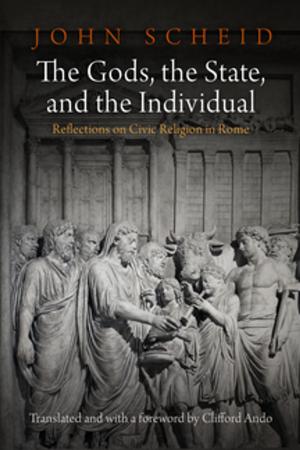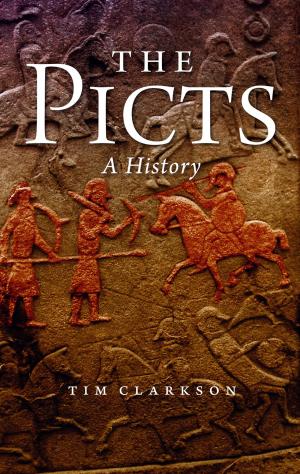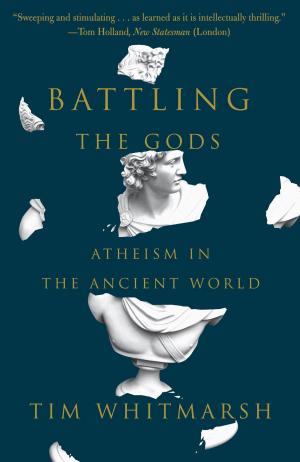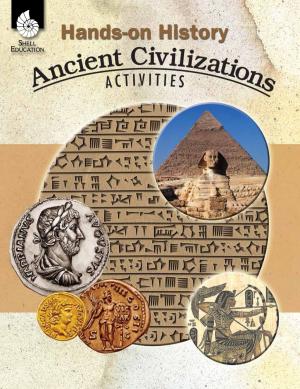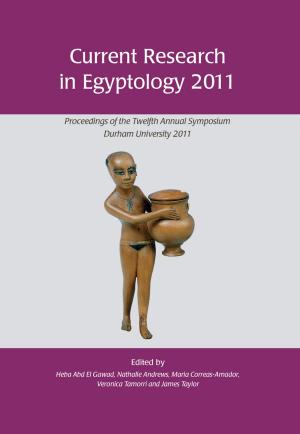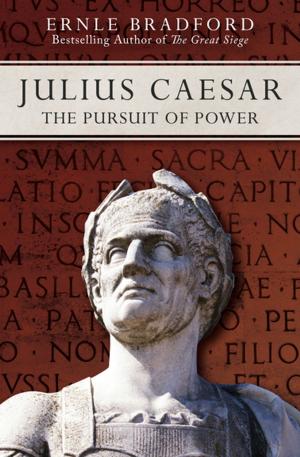| Author: | Neil L Thomas | ISBN: | 9780994187123 |
| Publisher: | Neil L Thomas | Publication: | November 5, 2014 |
| Imprint: | BookPOD | Language: | English |
| Author: | Neil L Thomas |
| ISBN: | 9780994187123 |
| Publisher: | Neil L Thomas |
| Publication: | November 5, 2014 |
| Imprint: | BookPOD |
| Language: | English |
STONEHENGE SPEAKS is about archaeology and anthropology, not the prosaic kind about bits of broken pottery and primitive savages clothed in fur skins, it is about people given the gift of imagination and creative thought. History is history, prehistory is often thought of as the time when writing was unknown; a simplistic attitude by those who have not learnt to read the story, an attitude that belittles our forebear’s skills forming a record in a readable form. “Stonehenge Speaks” concerns the sea-linked peoples of Ireland, Britain and north-west Europe, the “Old People” who are seen to have thought about life and its problems more than eight thousand years ago. They created artefacts and monuments in their own time, memorials made so we could understand their thinking, writing, reading and demonstrated mathematical skills combined with archaeoastronomical knowledge. The story in this book has been arranged from the present to the past, similar to researching a family history, from the known to the unknown. From the present that we know about, to history in books and then to prehistory that extends to the far distant past in Scotland. Founded on decades of research both here and in Europe, “Stonehenge Speaks” explains the “Old Peoples” legacy to us from many sources in understandable and informative terms. Thirty-three has been in use since 3500 BC to mean or imply regal, sacred, heavenly, the Otherworld, a form of symbolism that continues today. Of major importance are the newly detailed accounts of the Stonehenge Sun and Moon calendars, the Ness of Brodgar petroglyphs and the Rhondda Calendar dated 4270 BC, the latter seen as the first writing in human history; immediately readable and comprehensible, millennia earlier than Sumerian cuneiform and Egyptian cartouche inscriptions. Locations include Washington D.C., USA, Wales, Scotland, Ireland, England, Denmark, France and Germany. About the Author: As an engineer, professional rules require one to adopt the KIS principle, recognise Murphy’s Law of things that can go wrong, do not fight Nature but go along with it, double check everything. Those have been my guiding principles preparing this history and putting it on paper. A chartered engineer in the Australian oil and gas industry I made business and personal field trips to Ireland, Wales, England, Scotland, Denmark, the Netherlands, France, the Middle East, Egypt, India, China, Canada and the USA. Years of archaeological research led to an understanding how the myths and folklore of north-west European peoples complement prehistoric monuments; the evidence fits together like pieces in a jigsaw puzzle. Reading the written word, the glyphs that make up a word is a technique we learn as young children. Reading engineering drawings or architectural concept sketches is another learned ability, a skill that has been of immense value I applied to Morton, Rhondda, Ness, Knowth, Newgrange, Tustrup, Stonehenge, Woodhenge, Mount Pleasant, Stanton Drew, Durrington Walls and many more. Reviews: “A new theory could help solve the age-old riddle behind one of the world’s most remarkable prehistoric monuments. The story behind Stonehenge will have to be revised as the result of research by a Monash classicist. Dr Neil L Thomas has produced a radical, perhaps definitive explanation of its design and purpose. Neil, an engineer turned classical scholar, says Stonehenge and other prehistoric circles in Europe and Ireland were built to observe the annual cycles of the Sun and the Moon and functioned as giant calendars. In his PhD thesis, ‘The Proto Civilisation of Albion & Erin’, he describes a pre-Celtic culture which had a grasp of mathematical concepts usually credited to civilisations several thousand years younger. Far from being herdsmen and hunter-gatherers, the inhabitants of Ireland and Britain performed prodigious feats of surveying, design and engineering. Neil’s supervisor Dr Peter Bicknell of the Department of Classical Studies, describes the core ideas of the thesis as “Very convincing” and believes it is a major contribution to modern understanding of human activities and beliefs in pre-Bronze Age Ireland, Britain and Europe. Editor, Monash University Research Review, 1991. “In 1977 Dr Thomas like many Australians with Celtic surnames before him, went searching for his ancestors, only to stumble across an entirely pre-Celtic civilisation. His casual interest rapidly deepened, after twelve years of intensive scholarship he presented a brilliant PhD thesis. Graeme O’Neill, retired, Science Correspondent ‘The Age’ newspaper, Melbourne.
STONEHENGE SPEAKS is about archaeology and anthropology, not the prosaic kind about bits of broken pottery and primitive savages clothed in fur skins, it is about people given the gift of imagination and creative thought. History is history, prehistory is often thought of as the time when writing was unknown; a simplistic attitude by those who have not learnt to read the story, an attitude that belittles our forebear’s skills forming a record in a readable form. “Stonehenge Speaks” concerns the sea-linked peoples of Ireland, Britain and north-west Europe, the “Old People” who are seen to have thought about life and its problems more than eight thousand years ago. They created artefacts and monuments in their own time, memorials made so we could understand their thinking, writing, reading and demonstrated mathematical skills combined with archaeoastronomical knowledge. The story in this book has been arranged from the present to the past, similar to researching a family history, from the known to the unknown. From the present that we know about, to history in books and then to prehistory that extends to the far distant past in Scotland. Founded on decades of research both here and in Europe, “Stonehenge Speaks” explains the “Old Peoples” legacy to us from many sources in understandable and informative terms. Thirty-three has been in use since 3500 BC to mean or imply regal, sacred, heavenly, the Otherworld, a form of symbolism that continues today. Of major importance are the newly detailed accounts of the Stonehenge Sun and Moon calendars, the Ness of Brodgar petroglyphs and the Rhondda Calendar dated 4270 BC, the latter seen as the first writing in human history; immediately readable and comprehensible, millennia earlier than Sumerian cuneiform and Egyptian cartouche inscriptions. Locations include Washington D.C., USA, Wales, Scotland, Ireland, England, Denmark, France and Germany. About the Author: As an engineer, professional rules require one to adopt the KIS principle, recognise Murphy’s Law of things that can go wrong, do not fight Nature but go along with it, double check everything. Those have been my guiding principles preparing this history and putting it on paper. A chartered engineer in the Australian oil and gas industry I made business and personal field trips to Ireland, Wales, England, Scotland, Denmark, the Netherlands, France, the Middle East, Egypt, India, China, Canada and the USA. Years of archaeological research led to an understanding how the myths and folklore of north-west European peoples complement prehistoric monuments; the evidence fits together like pieces in a jigsaw puzzle. Reading the written word, the glyphs that make up a word is a technique we learn as young children. Reading engineering drawings or architectural concept sketches is another learned ability, a skill that has been of immense value I applied to Morton, Rhondda, Ness, Knowth, Newgrange, Tustrup, Stonehenge, Woodhenge, Mount Pleasant, Stanton Drew, Durrington Walls and many more. Reviews: “A new theory could help solve the age-old riddle behind one of the world’s most remarkable prehistoric monuments. The story behind Stonehenge will have to be revised as the result of research by a Monash classicist. Dr Neil L Thomas has produced a radical, perhaps definitive explanation of its design and purpose. Neil, an engineer turned classical scholar, says Stonehenge and other prehistoric circles in Europe and Ireland were built to observe the annual cycles of the Sun and the Moon and functioned as giant calendars. In his PhD thesis, ‘The Proto Civilisation of Albion & Erin’, he describes a pre-Celtic culture which had a grasp of mathematical concepts usually credited to civilisations several thousand years younger. Far from being herdsmen and hunter-gatherers, the inhabitants of Ireland and Britain performed prodigious feats of surveying, design and engineering. Neil’s supervisor Dr Peter Bicknell of the Department of Classical Studies, describes the core ideas of the thesis as “Very convincing” and believes it is a major contribution to modern understanding of human activities and beliefs in pre-Bronze Age Ireland, Britain and Europe. Editor, Monash University Research Review, 1991. “In 1977 Dr Thomas like many Australians with Celtic surnames before him, went searching for his ancestors, only to stumble across an entirely pre-Celtic civilisation. His casual interest rapidly deepened, after twelve years of intensive scholarship he presented a brilliant PhD thesis. Graeme O’Neill, retired, Science Correspondent ‘The Age’ newspaper, Melbourne.

